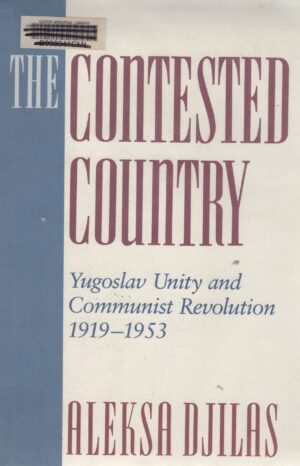
The Contested Country by Aleksa Djilas (1991. Harvard. ISBN 0-674-16698-1)
Diljas answers many of my questions about why and how the relatively new nation of Yugoslavia emerged from the aftermath of WW II. And while he doesn’t enlarge the topic to include why and how that same nation disintegrated a decade after Marshall Tito (the titular head of the country from 1945 until his death in 1980) ended his long reign, the seeds of understanding the nation’s demise are indeed reflected in the political history chronicled by the author.
I ordered a used copy of this scholarly work not for my reading pleasure or on some whim of trying to understand my own Balkan heritage (I’m one-quarter Slovenian) but because the writing bug has me pointed in the direction of my first novel, The Legacy. In that story, I somewhat innocently beatified Tito and his prowess in forging an army and a nation. I did not, for example, delve into the reasons behind Croatian and Serbian atrocities against each other during WW II nor explore the massacres, murders, and heavy-handedness of Tito towards the vanquished once his Partisans (Communist guerrillas) emerged as the clear power during their war against the Germans, Italians, Croat Ustashi (Fascists aligned with the Axis Powers), and Serbian Chetnik forces. That history, I think, is a fine setting for, if not a sequel, than at least a sequential novel, which I’ve just begun to work on. Research, as Mitchener has taught those of us seeking to write fictional truth, forms the bones of a historical novel. And so, this book became a “must” read.
The Contested Country is a scholarly read. By that I mean Diljas offers a plethora of footnoting to support his essential argument: that both Croatia and Serbia, the larges components in terms of the population of what became Yugoslavia, harbored nearly magical thinking when it came to interpreting the importance of their history. The medieval kingdoms of Serbia and Croatia were never world or regional political powers when they did exist as independent nation states. Ultimately, both were absorbed by larger empires; the Croats into Austro-Hungry and the Serbs into the Ottoman body politic. Serbia managed, before WW I, to wrest itself free from Turkish control and, at the end of the war, as a member of the victorious alliance, carved out the Kingdom of the Serbs, Croats, and Slovenes (the South Slavs), leading to the imposition of Serbian monarchs, who, on the cusp of the 1930s, turned the constitutional monarchy into a dictatorship. Imposition of Serbian rule against the Croatian national will, coupled with traditional Croatian animosity towards the Serbs (not based upon language, culture, or even religion but ethnicity) led to an explosion of intraSlav terrorism and slaughter, the extent of which, given the mists of history, remains largely difficult to document even today.
Anyone who is seeking to understand the Balkans as they exist in the 21st century should start here. The book is not a pleasurable read but it is succinct, well drawn, and sets the stage for what took place once Tito died.
4 stars out of 5.
Peace
Mark


